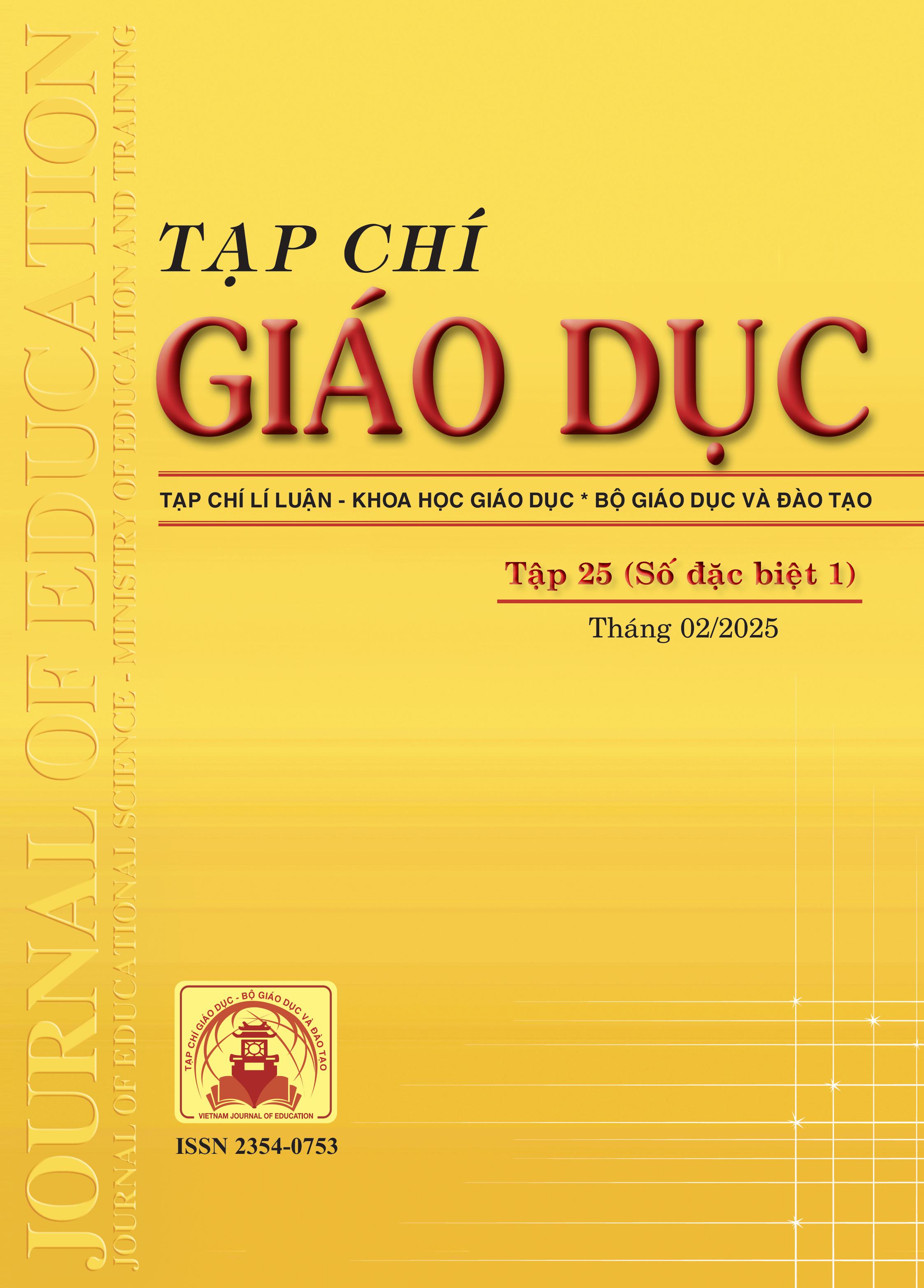Nghiên cứu về tư duy thiết kế trong giáo dục STEM trên cơ sở dữ liệu Scopus ở trường trung học phổ thông giai đoạn 2015-2024
Tóm tắt
Design Thinking has emerged as an innovative and effective approach in STEM education, helping high school teachers enhance their lesson design competences and develop innovative teaching skills. This study employs a systematic review method and keyword network analysis using VOSviewer to elucidate the role of Design Thinking in improving STEM teaching quality. The findings indicate that Design Thinking not only strengthens teachers' critical thinking and problem-solving skills but also encourages active student participation and interdisciplinary knowledge application in real-world contexts. However, several challenges, including limitations in resources, time, and teaching skills, need to be addressed through specialized training programs and suitable teaching materials. This research provides practical recommendations to foster the integration of Design Thinking into STEM education, aiming to improve teaching quality and meet the demands of the 21st century.
Tài liệu tham khảo
Baran, M., Baran, M., Karakoyun, F., & Maskan, A. (2021). The Influence of Project-Based STEM (PjbL-STEM) Applications on the Development of 21st-Century Skills. Journal of Turkish Science Education, 18(4), 798-815. https://doi.org/10.36681/tused.2021.104
Brown, T. (2009). Change by design: How design thinking creates new alternatives for business and society. Harper Business.
Cai, R., & Chiang, F.-K. (2021). A laser-cutting-centered STEM course for improving engineering problem-solving skills of high school students in China. STEM Education, 1(3), 199-224. https://doi.org/10.3934/steme.2021015
Carroll, M., Goldman, S., Britos, L., Koh, J., Royalty, A., & Hornstein, M. (2010). Destination, imagination and the fires within: Design thinking in a middle school classroom. International Journal of Art & Design Education, 29(1), 37-53. https://doi.org/10.1111/j.1476-8070.2010.01632.x
Chien, Y.-H., Liu, C.-Y., Chan, S.-C., & Chang, Y.-S. (2023). Engineering design learning for high school and college first-year students in a STEM battlebot design project. International Journal of STEM Education, 10(1). https://doi.org/10.1186/s40594-023-00403-0
El-Kassem, R. C. (2019). Servant leadership and perceived challenges in STEM classes: The reinforcing role of problems and management techniques. Humanities and Social Sciences Reviews, 7(1), 423-432. https://doi.org/10.18510/hssr.2019.7148
Gratani, F., & Giannandrea, L. (2022). Towards 2030. Enhancing 21st century skills through educational robotics. Frontiers in Education, 7. https://doi.org/10.3389/feduc.2022.955285
Henriksen, D., Richardson, C., & Mehta, R. (2017). Design thinking: A creative approach to educational problems of practice. Thinking Skills and Creativity, 26, 140-153. https://doi.org/10.1016/j.tsc.2017.10.001
Kelly, N., Wright, N., Dawes, L., Kerr, J., & Robertson, A. (2019). Co-design for curriculum planning: A model for professional development for high school teachers. Australian Journal of Teacher Education, 44(7), 84-107. https://doi.org/10.14221/ajte.2019v44n7.6
Lou, S.-J., Shih, R.-C., Diez, C. R., & Tseng, K.-H. (2011). The impact of problem-based learning strategies on STEM integration for students with different learning styles. International Journal of Technology and Design Education, 21(1), 1-16. https://doi.org/10.1007/s10798-010-9142-3
Đã Xuất bản
Cách trích dẫn
Số
Chuyên mục
Giấy phép

Tác phẩm này được cấp phép theo Ghi nhận tác giả của Creative Commons Giấy phép quốc tế 4.0 .












